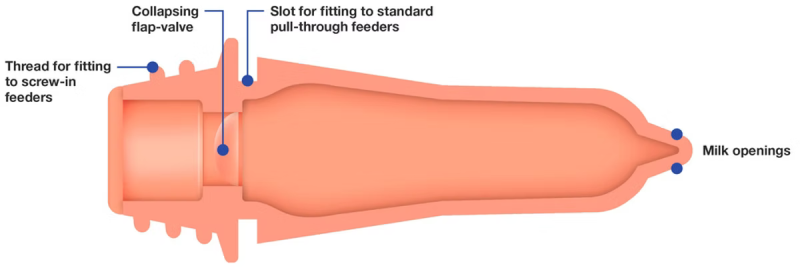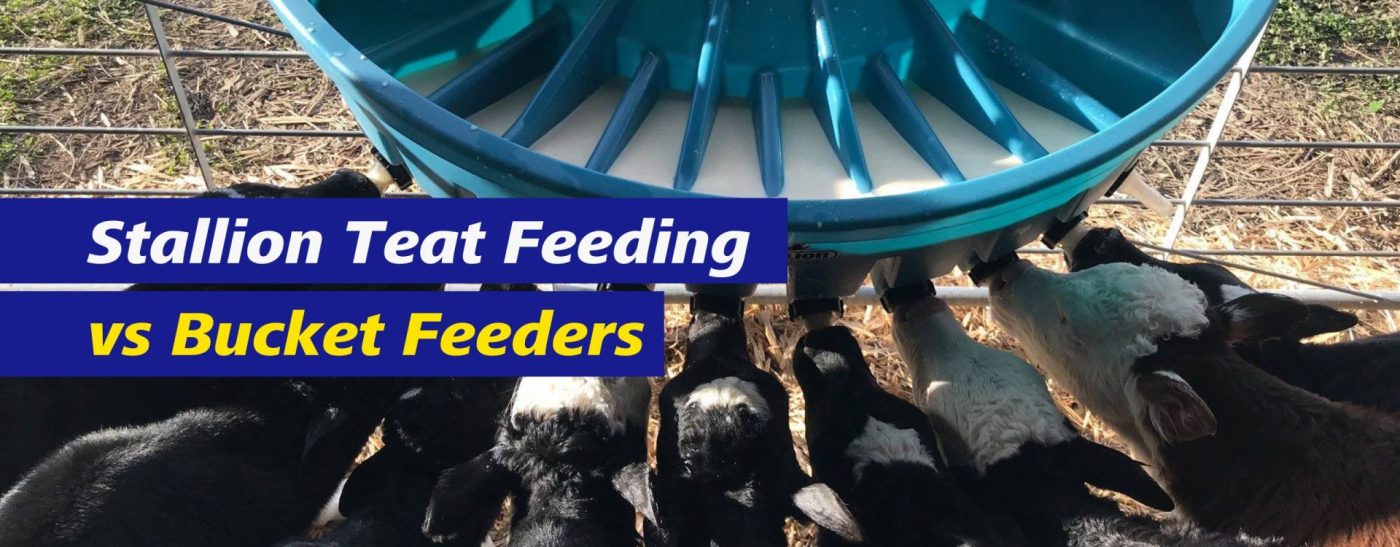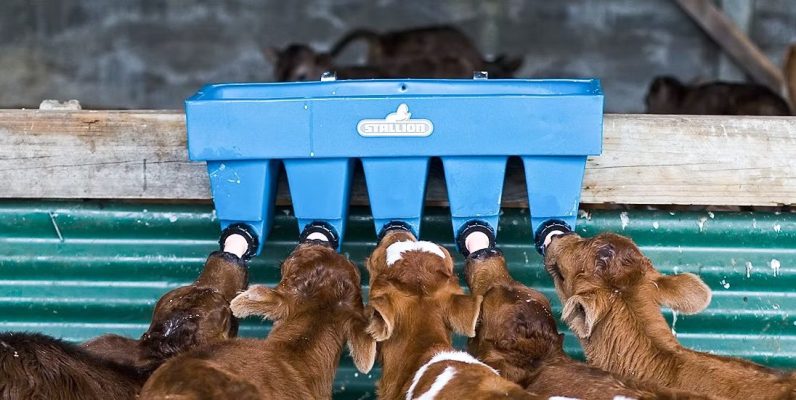Farming Equipment, Feeders
Effective calf rearing and the benefits of teat feeding systems
When rearing healthier calves on milk replacer, good hygiene and nutrition is essential. But the first step is ensuring sufficient high-quality colostrum within 12 hours of birth. A newly born calf’s ability to absorb immunoglobulins in colostrum reduces significantly from about six hours and has gone completely by 24 hours.
The muscular folds forming the oesophageal groove are stimulated by warmth and suckling. Feeding milk replacer at the correct temperature (made up with warm water at 45°C and fed at 37–39°C) and using teats stimulate the oesophageal groove to open best.
(Source: Influence of teat flow rate in commercial milk feeding, Cambridge University 2015).

Figure 1: Cross section of a Slow flow teat
Slower flowing teats if possible manufactured from a natural rubber mimic the udder and no more fluid passes through it than naturally would, allowing the calf to suckle more intensely. Internal collapsing flap-valves holds the milk in the teat making it much more responsive to the calf’s needs. It is designed to function like a real cows’ teat, moving all the time while the calf is suckling, never closing in its relaxed state. This means that the teat is self-cleaning and resists blocking. Openings on each side of the nipple, situated so that the crown of the nipple remains intact and the teat is more leak resistant.
Selecting high quality calf feeding equipment that incorporates slow flow teats is a sensible decision that not only improves digestion but also ensures longevity and assists in hygiene. As such, feeders made from polyethylene that is both tough and durable but easily cleaned is preferable. Open tops and ergonomically moulded units can be thoroughly cleaned quicker and easier. Less milk residue build-up and the ability to dry naturally after cleaning reduce bacteria growth too.
Using detergent for feeders or buckets is often recommended but extreme care must be taken especially in feeding young calves so chemical residues are not left and ingested which can them self be a cause of scour. Hot soapy water for this reason, is often preferred combined with easily cleaned feeding equipment. A change of staff over a weekend with a poor rinse regime after feeding leaving a slight chemical residue could be the start of scours you may be puzzled by. (Source: Cow Signals S. Harper).
The ‘Smart Cow Teat and Cap’ or ‘Peach Teat’ is designed to fit all Stallion feeders. A Stallion Smart Cow Teat is fitted with a removable valve and designed for calves from 1-6 weeks and can be used with or without the valve. The Smart Cow teat with the valve is ideal for calves 1-6 weeks as it helps the calves drink milk. When calves are older than 6 weeks, simply remove the valve as the calves have to suck harder, helping to further stimulate the saliva for better rumen development.
Peach Teats also supplied with Stallion feeders allow no more fluid to pass through it than a cow’s udder naturally would, allowing more intensive suckling than conventional technology. Also stimulating saliva flow improving the PH-level and curds in the abomasum leading to better digestion.
Shop our Stallion range here. https://www.shopdatamars.co.uk/product-category/dairy-feeders/stallion-feeders/



